#jazz spirituality
Text

Spiritual jazz (or astral jazz)[1] is a sub-genre of jazz that originated in the United States during the 1960s. The genre is hard to characterize musically but draws from free, avant-garde and modal jazz and thematically focuses on transcendence and spirituality. John Coltrane's 1965 album A Love Supreme is considered landmark in the genre.

Origins
Pharoah Sanders in 1981.
Critics usually associate spiritual jazz with the 1960s but the beginnings of the genre can be traced to the 1940s and 1950s in works such as Black, Brown and Beige by Duke Ellington, Zodiac Suite by Mary Lou Williams, and Jazz at the Vespers by George Lewis.
During the 1960s in the United States, the civil rights movement was occurring, causing societal change and political movements. As a result, African-American people gained more freedom to celebrate their culture and to express themselves religiously. This led to a desire to push the conventions of jazz, with some artists choosing to search for transcendence and spirituality in their music.
John Coltrane's 1965 album A Love Supreme is generally considered the genesis of spiritual jazz though Coltrane can be heard developing the sound on the song "Spiritual" recorded four years earlier. Treblezine wrote "Spiritual jazz begins, essentially, with John Coltrane," while Pitchfork wrote "This musical exploration [of spirituality] was epitomized by tenor saxophonist John Coltrane". A Love Supreme and other works by John Coltrane inspired other jazz musicians to create music searching for transcendence. For example, Pharoah Sanders and Don Cherry were considered to have taken inspiration from Coltrane's spiritual works.
After John Coltrane's death in 1967, his wife Alice Coltrane and Sanders—both who had previously played with Coltrane—were some of the first to continue the sound of the genre. Coltrane's 1971 album Journey in Satchidananda combined spiritual jazz with influences from Hindustani classical music, after her journey into spirituality with help from Swami Satchidananda. Journey in Satchidananda used ragas, harps, sitars, and ouds to achieve its sound. Pharoah Sanders took inspiration from Arabic, Indian, and Afro-Cuban music to create early spiritual jazz albums, including Tauhid (1967) and Karma

#african#afrakan#kemetic dreams#africans#brownskin#afrakans#brown skin#african culture#afrakan spirituality#jazz spirituality#spiritual jazz#afro cuban music#pharoah sanders#tauhid#journey in satchidananda#ragas#harps#sitars#ouds#Kamasi Washington#alice coltrane#duke ellington#miles davis#african music
45 notes
·
View notes
Text

147 notes
·
View notes
Text
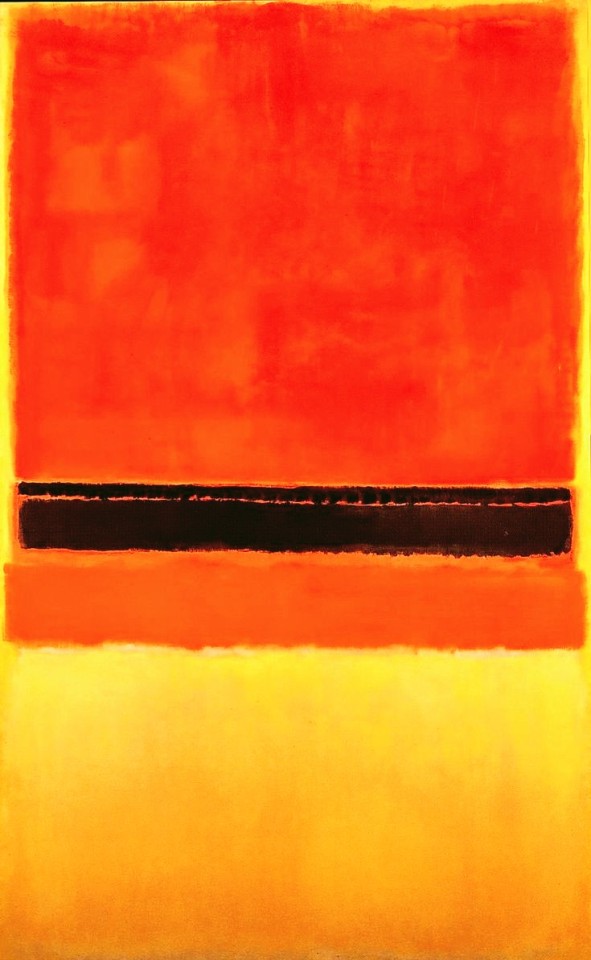
Mark Rothko Untitled (Red, Black, Orange and Pink on Yellow). 1954. Oil paint, egg and glue on canvas: 228 × 137 cm (90 × 54 in).
#mark rothko#retro#1950s#jazz#dreams#spirituality#color#art#poetry#art history#the universe#ethereal#culture#design#light#abstract art#painting#aesthetic#modern art#vibes#🎨
75 notes
·
View notes
Note
Idea: SIC Prowl is actually severely underweight. A healthy Prowl is a soft chubby prowler because his body just naturally holds onto and stores any small amount of extra resources because his processor uses so much energy and the having a surplus actually decreases the amount of crashes Prowl experiences.
Jazz does not know this...at first. All he knows is Prowl is famous for forgetting to stop and refuel and takes that as a challenge. He is delightedly surprised as he watches prowls frame gain a layer of lush padding, and while prowls hips and aft has always been lovely, as he gains weight they become something hymns are written about. He never knew Prowl had dimples till his face started rounding out and Primus, that cute little belly fits prowler perfectly.
Prowl being so focused on the war has not noticed that he is steadily returning to his pre-enforcers weight and Jazz is working very hard not to pop his panel, don't want to scare Prowl away before he has the chance to urt him after all.
youre so right. im pinning this to the wall so everyone can see it
#not really because i need the server link to be my pinned post but#spiritually#askbox#Anonymous#prowl#jazz#chubformers#valveplug#feed.ism
68 notes
·
View notes
Text

Albert Ayler, Prospect Park, Brooklyn, 1969.
Elliott Landy, Kodak infrared film
229 notes
·
View notes
Text
Ancient Infinity Orchestra - River of Light - Leeds group is an apt addition to the Gondwana Records roster
Ancient Infinity Orchestra is a 14-member jazz ensemble led by double-bassist and composer Ozzy Moysey, based in the bustling creative city of Leeds in the North of England – home to one of the most innovative and community-based jazz scenes in the UK. Saxophonist Mathew Cliffe, who also performs with Matthew Halsall, is a key member of the rotating line-up which includes drums, two bassists, keyboards, harp, violin, cello, two tenors, alto, oboe, flute and percussion.
Their Gondwana Records debut ‘River of Light’ is out on 17th November and drinks deep from the well of spiritual jazz. This music is especially inspired by the soulful sounds of Pharoah Sanders, Alice and John Coltrane – all of whom are mentioned in the brilliant track ‘Pharoah Sings’ – but also channels a certain Northern sensibility that can be heard in the music of Matthew Halsall or Alabaster de Plume. Melodic, warm and honest this is music that is happy to wear its heart on its sleeve.
This is also communal music made by friends, which offers a deep celebration of togetherness and of music-making. It’s confidently deep music, moving and meditative, and Ozzy draws on philosophy and nature as well as musical inspirations to foster a focus on giving and sharing beautiful things with one another and with the listener.
29 notes
·
View notes
Text
Rust - Yussef Dayes (2023)
#music release#music#music recs#new music#jazz#jazz fusion#funk#jazz funk#spiritual jazz#yussef dayes#yussef kamaal#Bandcamp#2023
32 notes
·
View notes
Text
Instagram: @davidsguitarloft
Herbie on leaving out what Miles called the “butter” notes to open up the sound to new possibilities. And open up the ear to new sounds. 👂🏻
#jazz#herbie hancock#miles davis#chords#jazz music theory#music theory#piano#beautiful music#spiritual music
14 notes
·
View notes
Text

Organic Pulse Ensemble - Ypocalypse (Ultraaani)
All music by Gustav Horneij, 2024.
Thanks to AK for hipping me to this record.
#Organic Pulse Ensemble#Ypocalypse#lloyd miller#zither suite#jazz#ethnomusicology#2024#ultraaani records#finnish label#spiritual jazz#gustav horneij#multiinstrumentalist
9 notes
·
View notes
Text

Matana Roberts - Predestined Confessions
from:
Matana Roberts - Coin Coin Chapter Five: In The Garden (Constellation, 2023)
#2020s#Matana Roberts#Jazz#Avant-Garde#Free Jazz#Spiritual Jazz#Jazz Poetry#improvisation#complex#dissonant#disturbing#Women in jazz#Constellation#2023#week 44 2023#Bandcamp
14 notes
·
View notes
Note
Are you planning on writing any more magnus archives fanfics now that the magnus protocol has started up? The idea of getting more TMA content is absolutely watering my crops and clearing my skin 😌
Haha yes I saw that more TMA content is coming out!
I have no intention right now. I'm not that interested in TMA right now, and I have no intention of listening to TMP.
Even if I was listening, I have a huge backlog of fic I'm working on right now, and something else on the pile would get overwhelming haha. I just don't have the time for writing I used to...never should have gotten a life...my first mistake...........
#if you're wondering 'wow it's been a minute since meg posted fic'#just imagine me dressed like a blues brother playing the sax in a jazz club#that's what im up to these days#semi-spiritually#my asks
12 notes
·
View notes
Text


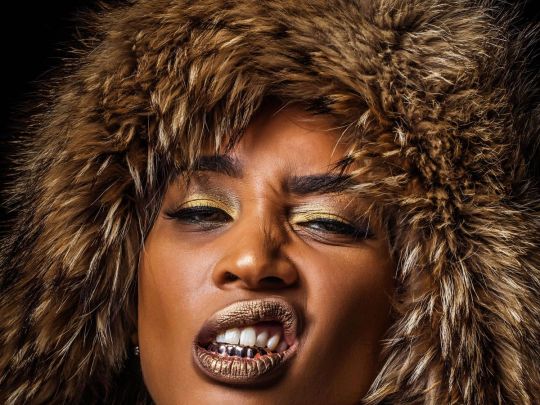

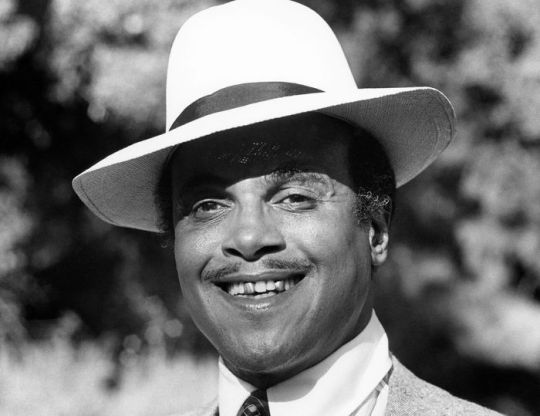
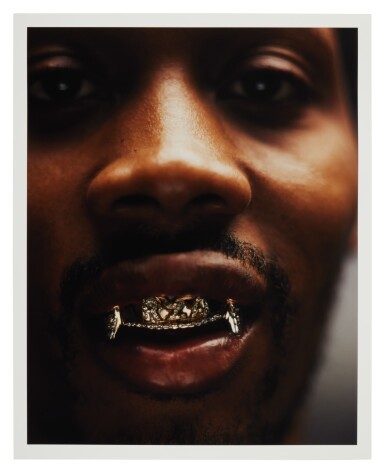
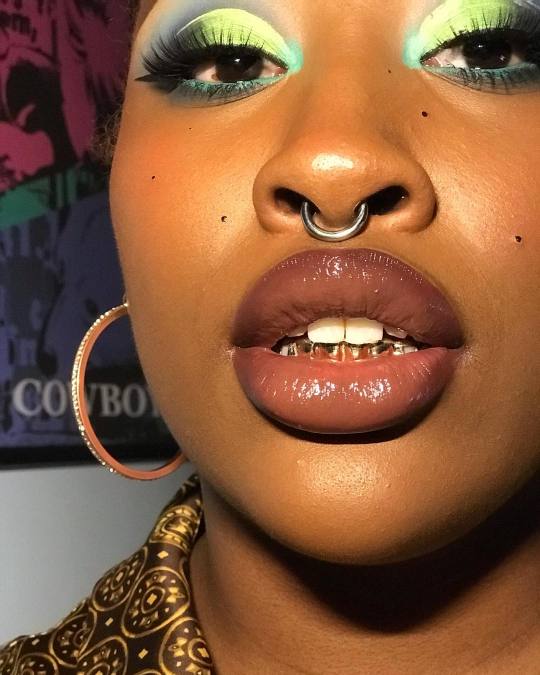
Gold teeth were first present in America during the Jim Crow era. Originally, it had become a tradition in Louisiana before becoming a fashion trend around the Deep South region in the early 1900s.

After slavery, it was believed that many African Americans who were former slaves began getting the permanent gold caps to replace their rotting teeth that have deteriorated. It later became a symbol of wealth for ex-slaves who once worked on the plantation fields in the South, specifically Louisiana, where it first become a tradition.

Blues, Jazz and freed slaves who had money would get the permanent gold cap fillings as a fashion statement as flaunted by Jack Johnson, the first African heavyweight boxing champion.
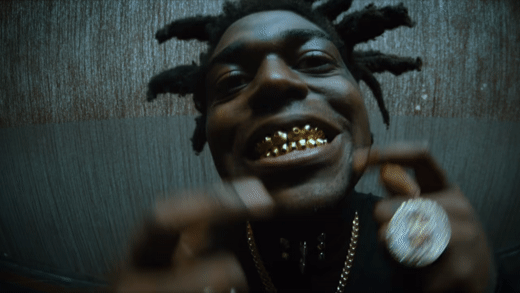
#african#afrakan#kemetic dreams#africans#brownskin#brown skin#afrakans#african culture#afrakan spirituality#gold teeth#grilz#grill#grillz#grills#jewellery#jewelry#jewlery#jazz#slavery#jim crow era#jim crow#jack johnson#african american#african american history#civil rights movement#civil rights#louisiana#south#the south#dirty south
113 notes
·
View notes
Text

63 notes
·
View notes
Text
youtube
André 3000 - New Blue Sun
(2023, full album)
[New Age, Ambient, Progressive Electronic, Tribal Ambient, Spiritual Jazz, Post-Minimalism, Andean New Age]
#music#new age#ambient#progressive electronic#tribal ambient#spiritual jazz#post minimalism#andean new age#full album#Youtube
8 notes
·
View notes
Text
316: Toto Bissainthe // Chante Haïti

Chante Haïti
Toto Bissainthe
1977, Arion
“These songs are mostly slave songs taken from the Vodou cult. They speak of the quotidian, of the suffering of exile, and the desire of Africa, not as a geographical place but as a mythical land of freedom. They express their resistance and their refusal: resistance to the colonizer, refusal of his politics, of his religion, of his culture, of his language.”
So begins Toto Bissainthe’s statement on the rear of Chante Haïti, her 1977 collaboration with a small combo of Antillean folk and French jazz musicians: vocalists Marie-Claude Benoît and Mariann Mathéus; percussionists Akonio Dolo and Mino Cinélu (Miles Davis, Weather Report, Gong); Patrice Cinélu on acoustic guitar; and Beb Guérin on the double bass. The songs indeed fuse the Vodou ritual of her native Haiti with the European avant garde sounds of her adopted milieu of Paris, where she had moved to pursue acting and found herself a de facto exile due to the political situation back home. Bissainthe had become a prominent figure in the French theatre, performing in new plays by Beckett and Genet and co-founding Les Griots, France’s first Black theatre company; by the late ‘70s, she was an acclaimed recording artist to boot. Her accomplishments made her a prominent figure in the Haitian diaspora and her activist streak is apparent throughout Chante Haïti, explicitly linking the grief and yearning for liberation in these traditional ceremonials with the country’s contemporary struggles.
Like many songs on the album, the Creole words of opener “Soley danmbalab” mourn the people's estrangement from Mother Africa, a crossing which can neither be reversed or repeated. It begins like a field recording, Bissainthe’s soulful, Miriam Makeba-esque voice set to a chorus of rattles and bells and gurgling masculine whispers. As the song develops, her melody wends like a stream through the dense jungle of percussion, dissonant bass, and counterpoint chanting. Eventually, Mino Cinélu’s arrangement becomes more free, the male chorus imploring the Oungan (a male Vodou priest) to intercede with the creator on the people’s behalf as the tune breaks down into an increasingly abstract bass and drum interplay, while the three female singers exchange birdlike vocal improvisations.
youtube
“Ibo Ogoun (Variations)” is even wilder, evoking a trance ritual, the spirits speaking in many tongues through the celebrants as they seek to summon Ogun, God of Iron and War, to lead the battle of liberation. One of the male percussionists times his tanbou beat so that it hits just as he sings certain notes, creating the illusion that he voice has suddenly lurched down an octave for a moment, almost like a DJ freaking a vocal sample. Bissainthe, Mathéus, and Benoît match the intense drumming with some crazy syncopations, sometimes talking, sometimes hissing and whispering, sometimes wailing and ululating.
Most of the album takes on a more meditative tact, anchored by Guérin’s plangent double bass. On the smoky “Papadanbalab,” an entreaty to the serpent creator Damballa to bear witness to the penury of his people, Bissainthe sways over a slinky jazz bass line, Patrice Cinélu adding mellow acoustic fusion licks. The song seems like a brief stopover in a Parisian club. But even the less overtly intense tracks pack plenty of musical interest. “Lamize pa dous” has this hypnotic rhythm that sounds exactly like a micro house beat—in fact, the first thing it made me think of was Ricardo Villalobos’ Alcachofa, or Animal Collective at their campfire ravingest. The song is about the moment of surrender to death, the winnowing of time represented by water encroaching on all sides, the realization too late that “we spend our lives trying to fill the sea with stones.”
Listening to a record like this, especially in light of Bissainthe’s note on the back excoriating the colonialist ethnographer who reduces Haitian folklore to “excitement and violence,” requires at least a smidgen of awareness from the white listener that Chante Haïti is not intended for them. The traditions it engages with are of deep spiritual significance to many Haitians, both in the ‘70s and today. But for those inside and outside the culture who are willing to approach it with respect, Chante Haïti is a fascinating fusion of Antillean and European musics, and a peek into a profound and secret history.
youtube
316/365
#toto bissainthe#haiti#haitian music#vodou#haitian vodou#vodou music#diaspora#spiritual jazz#Kréyol djaz#creole#'70s music#female singer#female musicians#protest music#music review#vinyl record
5 notes
·
View notes
Photo

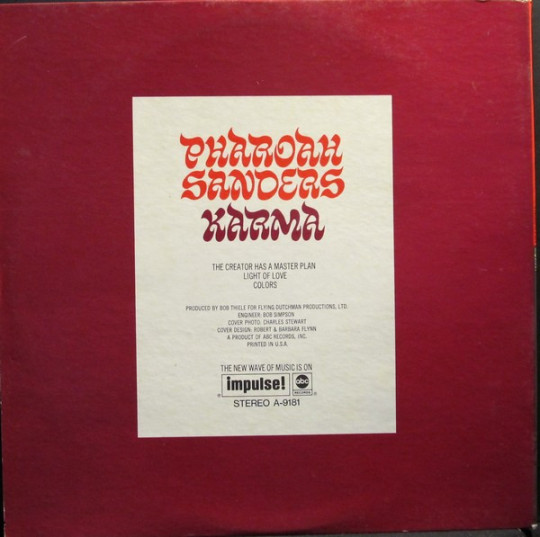


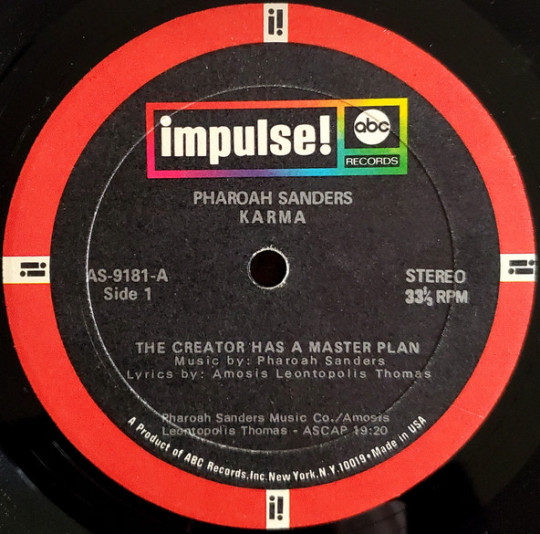
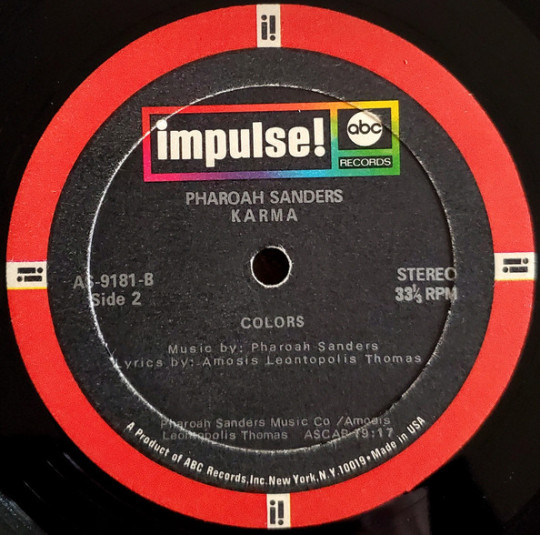
Pharoah Sanders – Karma
RIP Pharoah Sanders
433 notes
·
View notes